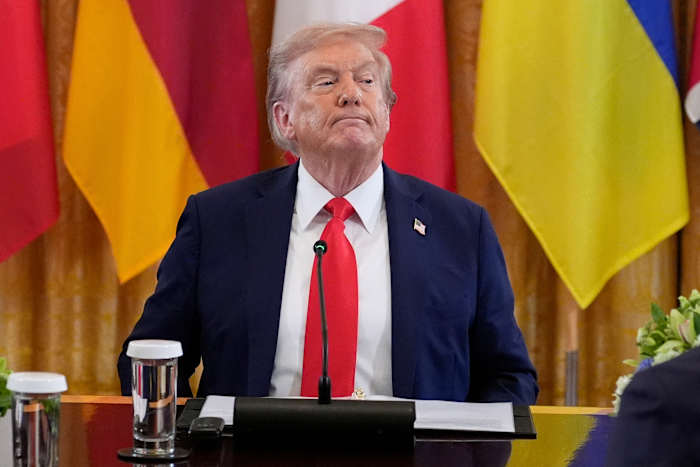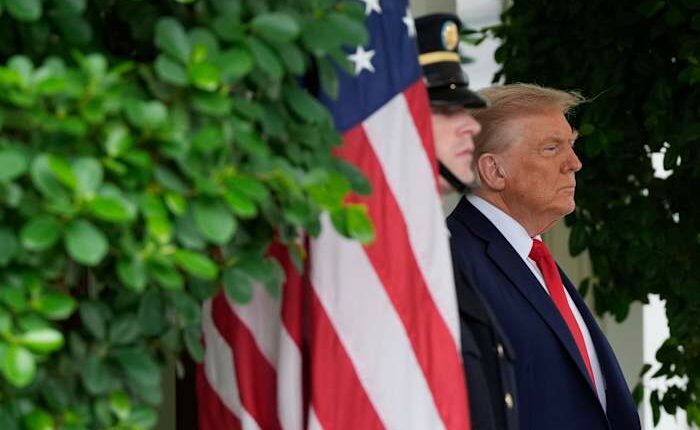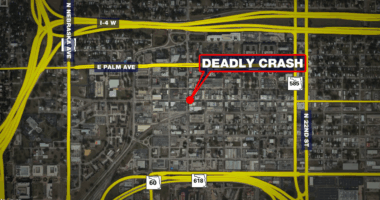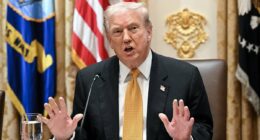Share this @internewscast.com

Recently, President Donald Trump has shown a strong willingness to use the extensive powers of his office to stop his party from losing control of Congress in the upcoming midterm elections.
Some of the measures Trump has taken to influence the election outcomes are usual yet debatable political tactics, pushed to an extreme level as per his style. These actions include urging Republican lawmakers in Texas and other states controlled by conservatives to alter their legislative boundaries to increase the number of U.S. House seats advantageous to the GOP.
Other actions involve a direct application of presidential power in unprecedented ways, such as instructing the Department of Justice to probe the major liberal fundraising body, ActBlue. Additionally, the department is demanding comprehensive voter information from each state, seemingly attempting to identify ineligible voters on a large scale.
On Monday, Trump took to social media, releasing a misleading narrative that promised to lead an initiative to ban voting machines and mail-in ballots, which have become a standard for Democratic voters ever since Trump advised Republicans against it in 2020 — a position he reversed before last year’s presidential election.
These actions collectively signify a unique effort by a sitting president to meddle in an important election before it occurs, stirring concerns among those worried about the future of American democracy.
“These are not actions typical of healthy democracies,” stated Ian Bassin, executive director of Protect Democracy, a nonpartisan group that has filed lawsuits against the Trump administration. “These are actions reminiscent of authoritarian regimes.”
Trump has already tried to overturn an election
Bassin noted that presidents routinely stump for their party in midterm elections and try to bolster incumbents by steering projects and support to their districts. But he said Trump’s history is part of what’s driving alarm about the midterms.
He referenced Trump’s attempts to overturn the results of the 2020 presidential election, which ended with a violent assault on the Capitol by his supporters.
“The one thing we know for certain from experience in 2020 is that this is a person who will use every measure and try every tactic to stay in power, regardless of the outcome of an election,” Bassin said.
He noted that in 2020, Trump was checked by elected Republicans in Congress and statehouses who refused to bend the rules, along with members of his own administration and even military leaders who distanced themselves from the defeated incumbent. In his second term, the president has locked down near-total loyalty from the GOP and stacked the administration with loyalists.
The incumbent president’s party normally loses seats in Congress during midterm elections. That’s what happened to Trump in 2018, when Democrats won enough seats to take back the House of Representatives, stymieing the president’s agenda and eventually leading to his two impeachments.
Trump has said he doesn’t want a repeat.
He also has argued that his actions are actually attempts to preserve democracy. Repeating baseless allegations of fraud, he said Monday during a meeting with Ukrainian President Volodymyr Zelenskyy that “you can never have a real democracy with mail-in ballots.” Earlier this month, Trump said that, because he handily won Texas in the 2024 presidential election, “we are entitled to five more seats.”
An attempt to engineer GOP control of the US House
Republicans currently have a three-seat margin in the House of Representatives. Trump pushed Texas Republicans to redraw their congressional map to create up to five new winnable GOP seats and is lobbying other red states, including Indiana and Missouri, to take similar steps to pad the margin even more.
The Texas Legislature is likely to vote on its map on Wednesday. There’s no guarantee that Trump’s gambit will work, but also no legal prohibition against fiddling with maps in those states for partisan advantage. In response, California Democrats are moving forward with their own redistricting effort as a way to counter Republicans in Texas.
Mid-decade map adjustments have happened before, though usually in response to court orders rather than presidents openly hoping to manufacture more seats for their party. Larry Diamond, a political scientist at Stanford University, said there’s a chance the redrawing of House districts won’t succeed as Trump anticipates — but could end up motivating Democratic voters.
Still, Diamond said he’s concerned. “It’s the overall pattern that’s alarming and that the reason to do this is for pure partisan advantage,” he said of Trump’s tactic.
Diamond noted that in 2019 he wrote a book about a “12-step” process to turn a democracy into an autocracy, and “the last step in the process is to rig the electoral process.”
The Justice Department acts on Trump’s priorities
Trump has required loyalty from all levels of his administration and demanded that the Department of Justice follow his directives. One of those was to probe ActBlue, an online portal that raised hundreds of millions of dollars in small-dollar donations for Democratic candidates over two decades.
The site was so successful that Republicans launched a similar venture, called WinRed. Trump, notably, did not order a federal probe into WinRed.
Trump’s appointees at the Department of Justice also have demanded voting data from at least 19 states, as Trump continues to insist he actually won the 2020 election and proposed a special prosecutor to investigate that year’s vote tally. Much as he did before winning the 2024 election, Trump has baselessly implied that Democrats may rig upcoming vote counts against him.
In at least two of those states, California and Minnesota, the DOJ followed up with election officials last week, threatening legal action if they didn’t hand over their voter registration lists by this Thursday, according to letters shared with The Associated Press. Neither state — both controlled by Democrats — has responded publicly.
Attempts to interfere with voting and elections
Trump’s threat this week to end mail voting and do away with voting machines is just his latest attempt to sway how elections are run. An executive order he signed earlier this year sought documented proof of citizenship to register to vote, among other changes, though much of it has been blocked by courts.
In the days leading up to the Jan. 6, 2021, attack on the Capitol to reverse his 2020 loss, Trump’s allies proposed having the military seize voting machines to investigate purported fraud, even though Trump’s own attorney general said there was no evidence of significant wrongdoing.
The Constitution says states and Congress, rather than the president, set the rules for elections, so it’s unclear what Trump could do to make his promises a reality. But election officials saw them as an obvious sign of his 2026 interests.
“Let’s see this for what it really is: An attempt to change voting going into the midterms because he’s afraid the Republicans will lose,” wrote Ann Jacobs, the Democratic chair of the Wisconsin Elections Commission, on X.
The president has very few levers to influence an election
Derek Muller, a law professor at the University of Notre Dame, said the idea of seizing voting machines in 2020 was a sign of how few levers the president has to influence an election, not of his power. Under the U.S. Constitution, elections are run by states and only Congress can “alter” the procedures — and, even then, for federal races alone.
“It’s a deeply decentralized system,” Muller said.
There are fewer legal constraints on presidential powers, such as criminal investigations and deployment of law enforcement and military resources, Muller noted. But, he added, people usually err in forecasting election catastrophes.
He noted that in 2022 and 2024, a wide range of experts braced for violence, disruption and attempts to overturn losses by Trump allies, and no serious threats materialized.
“One lesson I’ve learned in decades of doing this is people are often preparing for the last election rather than what actually happens in the new ones,” Muller said.
___
Copyright 2025 The Associated Press. All rights reserved. This material may not be published, broadcast, rewritten or redistributed without permission.













